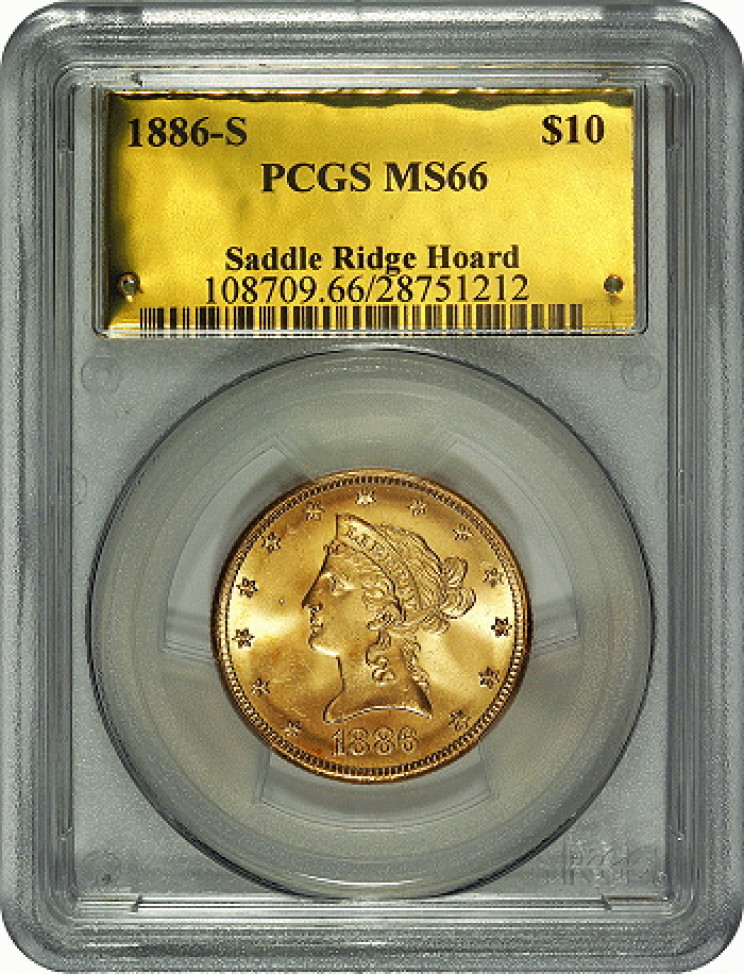By Marcia Wendorf from Investing Engineering
When you hear what people have found while searching for buried treasure with a metal detector, you may want to go out and buy one for yourself. Here are some of the most valuable treasure hoards ever found.
1. Staffordshire Hoard – 2009 | Value: $4.1 Million
On July 5, 2009, Terry Herbert, an amateur treasure hunter, was searching a newly-plowed farm field near Hammerwich, Staffordshire, England when his metal detector pinged. With the permission of the landowner, Fred Johnson, over five days of digging, 3,500 objects were pulled from the ground.
They were part of what came to be called the Staffordshire Hoard. It is comprised solely of military objects, with no vessels or eating utensils or jewelry. It included over 11 pounds (5.1 kg) of gold, 3 pounds (1.4 kg) of silver and semi-precious garnets. The garnets would have come from as far away as Sri Lanka or Afghanistan.
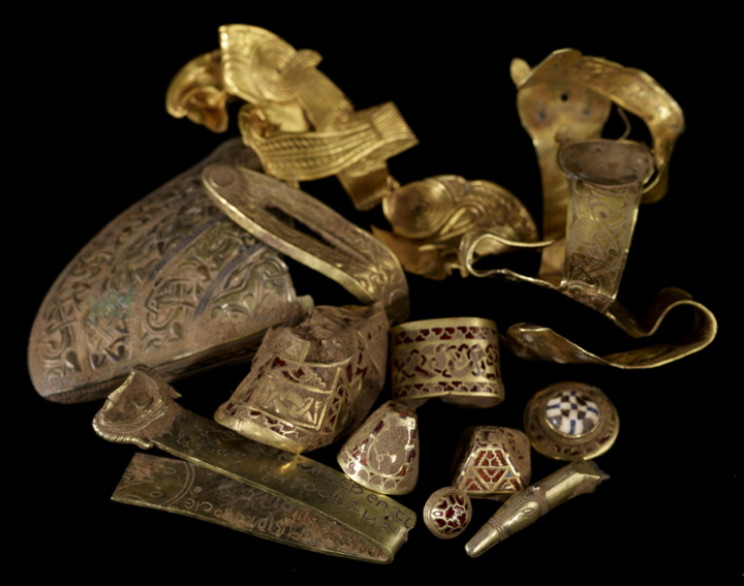
The objects were most likely created during the 6th and 7th centuries. At that time, the location was part of the Anglo-Saxon kingdom of Mercia. It’s possible that the hoard was buried in 875 A.D. when the area came under attack by Vikings.

In November 2009, the hoard was valued at £3.285 million, and the Birmingham Museum & Art Gallery launched a fundraising effort to raise enough money to buy it. With only three weeks to go before a deadline, that amount was raised. Today, the hoard is displayed at the Birmingham Museum.
In 2012, two documentaries about the hoard aired: the BBC Two’s Saxon Hoard: A Golden Discovery, and the Time Team’s Secrets of the Saxon Gold.
2. The Le Catillon II Hoard – 2012 | Value: Over 10 Million Pounds
Sometime in the early 1980s, metal detection enthusiasts Reg Mead and Richard Miles encountered a woman who told them a strange story.
She said that her father, a farmer on the British island of Jersey in the English Channel, had discovered silver coins while plowing his field. Mead and Miles approached the farmer, who gave them permission to search, but only for 10 to 15 hours right after the field’s crop were harvested.
Thirty years later, Mead and Miles were still searching when in June 2012, they spotted coins. Calling in some professional archaeologists, the coins slowly made their way out of the ground, all 68,000 of them!
The hoard also contained gold neck torcs, a sort of opened-ended necklace, and glass beads. Archaeologists determined that the hoard was buried around 30 B.C. to 40 B.C. by French Celts who were known as the Coriosolitae tribe of Celts.
They were most likely fleeing from a Roman invasion — Julius Caesar was the Roman Emperor at the time. The Le Catillon II Hoard is the largest hoard of gold jewelry and Celtic coins ever discovered.
3. St. Albans Hoard – 2012 | Value: £100,000
In September 2012, Westley Carrington went into a shop in the English town of Berkhamsted and bought a beginner’s metal detector. He then went out to hunt for coins on a farm field.

What Carrington found is one of the largest hoards of Roman gold coins ever found in Great Britain. It included 159 Roman Solidi, which date to the late fourth century A.D. This was when the Roman occupation of Britain ended.
The coins were struck during the reigns of Emperors Gratian, Valentinian II, Theodosius I, Arcadius and Honorius, and they were far more valuable than the typical silver, and bronze Roman coins.
During the fourth century A.D., St. Albans was the important Roman town of Verulamium, and the coins are now displayed at the Verulamium Museum.
4. Hoxne Hoard – 1992 | Value: $3.8 Million
On November 16, 1992, tenant farmer Peter Whatling had lost a hammer in a farm field just southwest of the village of Hoxne in Suffolk, England. The tenant asked his friend, Eric Lawes, to use his metal detector to find the hammer.

What Lawes found instead were silver spoons, gold jewelry, and gold and silver coins. After alerting authorities, a team of archaeologists was dispatched to the site, and they excavated it in a day.
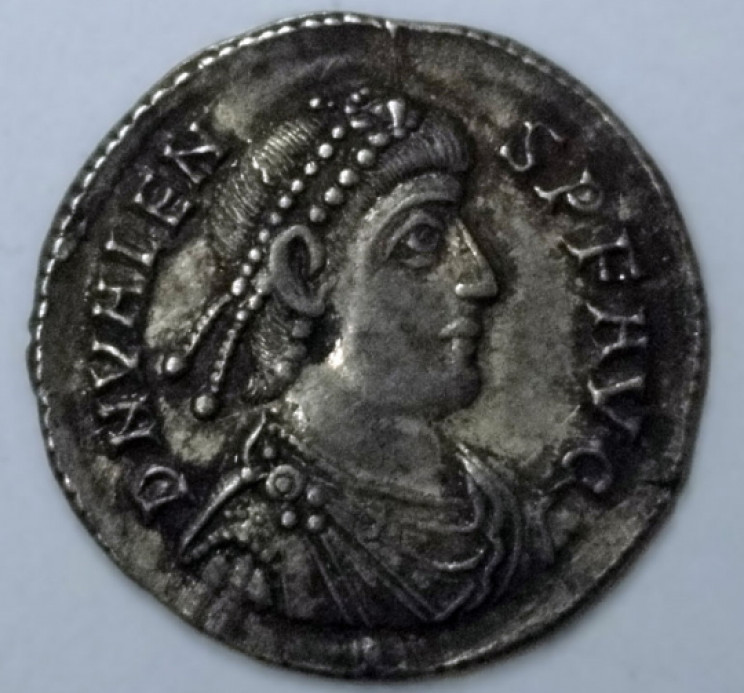
What they unearthed was the largest hoard of late Roman gold and silver ever discovered in Britain. The Hoxne Hoard is also the largest collection of fourth and fifth-century coins found anywhere in the Roman Empire.
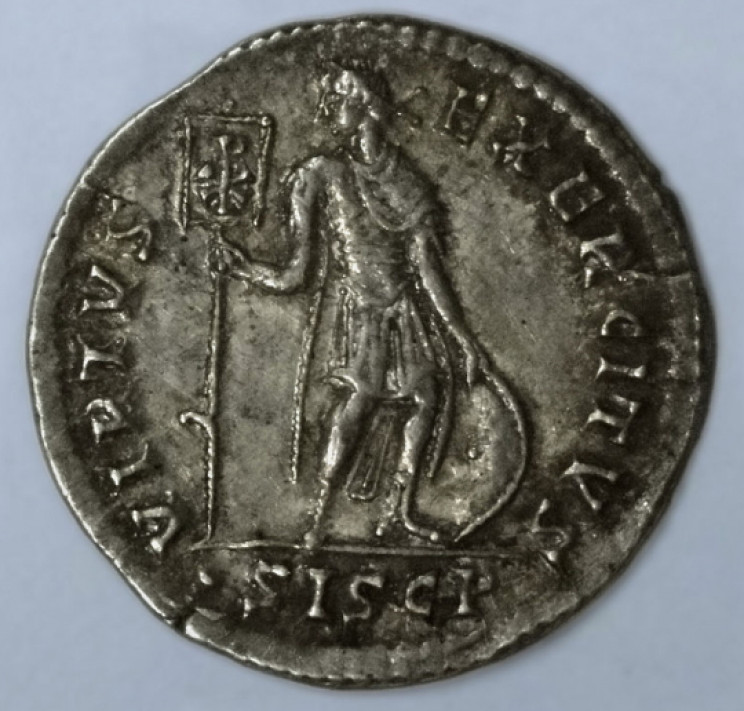
Among the items in the hoard were 569 gold coins (solidi), 14,272 silver coins, (miliarenses and siliquae), 24 bronze coins (nummi), 29 gold jewelry pieces, 98 silver spoons and ladles, a silver vessel handle shaped like a tigress, and four pepper pots, including the Empress Pepper Pot.

In 1993, England’s Treasure Valuation Committee valued the hoard at £1.75 million, or £3.5 million in 2018 pounds. That amount was paid to Whatling and Lawes.
The Hoxne Hoard is on display at the British Museum in London. Also on display is Whatling’s hammer.
5. The Cuerdale Hoard – 1840 | Value: $3.2 Million
On May 15, 1840, a group of workers was repairing the embankment of the River Ribble in Cuerdale, which is near Preston, England. They dug up a lead box which contained one of the largest Viking hoards ever found.

The hoard was comprised of over 8,600 items, including silver coins, jewelry, and silver ingots. While most of the items were created in eastern England Viking settlements, some of them came from Scandinavia, Italy, and Byzantium.

The coins were most likely buried between 903 A.D. and 910 A.D., right after the Vikings had been expelled from Dublin. Surprisingly, Preston folklore was that anyone who stands on the south bank of the River Ribble and looks upriver would be within sight of the richest treasure in England.
The treasure was given to Queen Victoria, and it is currently on display at the British Museum. The Cuerdale Hoard was included in the 2003 BBC documentary, Our Top Ten Treasures.
6. Środa Treasure – 1885 – 1888 | Value: $120 Million
On June 8, 1885, workers were demolishing an old building in the Polish town of Środa Śląska when they found a vase. In it were over 3,000 silver coins dating to the 14th century.
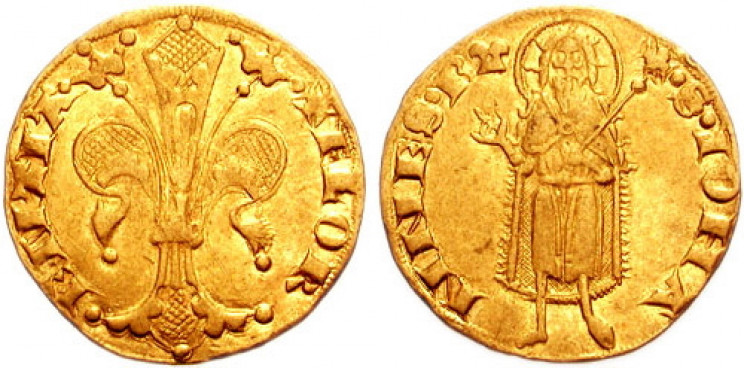
When demolition work moved to a nearby building, silver coins and gold florin coins were found. Enterprising locals started scouring the municipal landfill where debris from the buildings had been taken. That’s when things took an eye-popping turn.
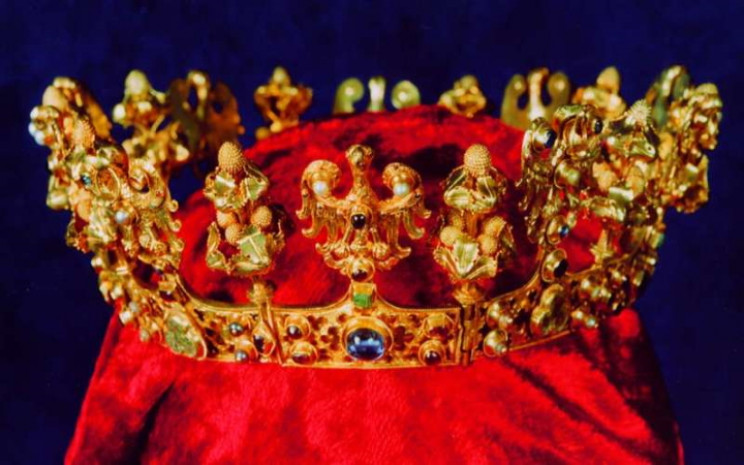
Items found included a gold woman’s crown that most likely belonged to the first wife of Emperor Charles IV, two 12th century gold pendants, two 13th century gold pendants, a medieval gold clasp containing precious stones, and a sapphire ring.
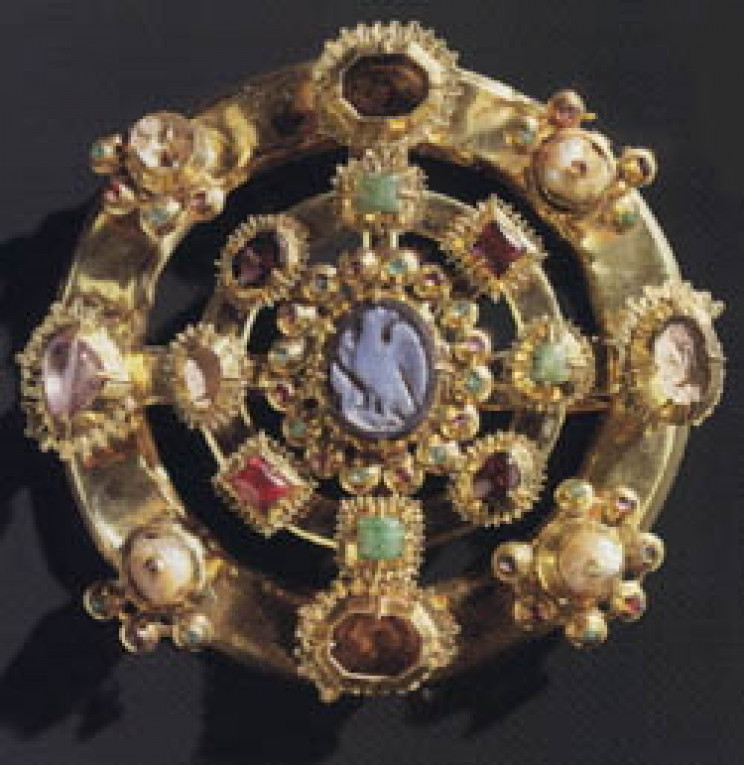
It has been determined that the treasure belonged to Emperor Charles IV, who likely pawned it to raise funds to support his claim to the title of King of the Romans.
The Środa Treasure is displayed at the Regional Museum in Środa Śląska. The owner of the hoard is the National Museum in Wrocław, Poland.
7. Caesarea Sunken Treasure – 2015 | Value: Priceless
In February 2015, a violent storm churned up Israel’s Mediterranean coastline. The next morning, Zvika Fayer was scuba diving off the ancient port town of Caesarea when something caught his eye. The sea floor was littered with gold coins having Arabic script on both sides.
The coins were dinars, minted during the reigns of Caliphs al-Hakim (996–1021 A.D.) and his son al-Zahir (1021–1036 A.D.). At that time, Caesarea was part of the Islamic Fatimid Dynasty, and the time period was just before the First Crusade in 1095 A.D.
Caesarea has a long and storied past. It flourished in 400 B.C. as a Phoenician and Greek trading post. Around 96 B.C., it was ruled by Queen Cleopatra. After the area was conquered by Rome, it was ruled by Herod the Great, and by 6 A.D., it was the capital of the Roman province of Judea and home to Pontius Pilate.
In all, over 2,000 coins have been pulled from the sea, and they are all 24-karat, having a purity in excess of 95%.
8. The Panagyurishte Treasure – 1949 | Value: Priceless
On December 8, 1949, brothers Pavel, Petko, and Michail Deikov were searching for clay at a tile factory near Panagyurishte, Bulgaria, when one of the brothers found what looked like a whistle and other objects. The brothers then took them to the mayor’s office.
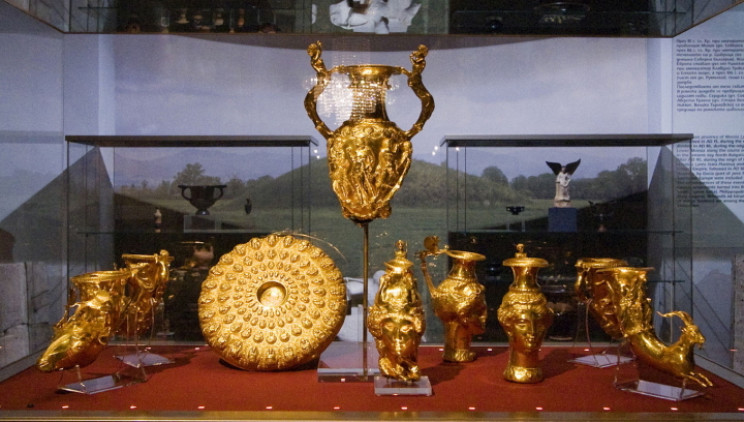
The whistle was actually a solid gold ceremonial drinking horn dating to the 4th century B.C. There were also golden decanters, golden dishes, and gold vases.

In all, 13 pounds (6.164 kg) of 24-karat gold was unearthed. The items date to between the 4th and 3rd centuries B.C. and are thought to have belonged to the Thracian king, Seuthes III. The items might have been buried to hide them from invasions by the Celts or Macedonians.
The treasure is displayed at the Plovdiv Regional Historical Museum.
9. The Saddle Ridge Hoard – 2013 | Value: A lot!
In February 2013, a Northern California couple were walking their dog on their large, rural property when something caught their eye. It was a large, rusty can.
After prying it out of the ground, the couple was amazed to find that the can contained gold coins. Using a metal detector, they unearthed eight cans filled with 1,427 gold coins that all dated from between 1847 and 1894.
The couple then noticed an old can hanging from a tree, and an odd-shaped rock on a nearby hillside. These two markers pointed directly to the burial site.

The coins consisted of $20, $10 and $5 denominations, and when the couple contacted Kagin’s, a numismatics firm in Tiburon, California, they learned that many of the coins were in uncirculated, or mint condition.
In fact, many of the coins were the finest specimens of their kind ever found. These include:
* An 1866-S $20 Double Eagle coinno motto, valued at $1 million,
* An 1866-S $20 Double Eagle coinwith a motto, which is the finest known specimen,
* An 1877-S $20 Double Eagle coin, which is tied for the finest known specimen,
* Four 1888-S $20 Double Eagle coins, which are tied for the finest known specimens,
* Two 1889-S $20 Double Eagle, which are tied for the finest known specimens,
* An 1894-S $20 Double Eagle, which is tied for the finest known specimen.
Questions immediately arose as to whether the Saddle Ridge Hoard could be the result of a theft from the U.S. Mint.
On March 4, 2014, the Mint stated that they “… do not have any information linking the Saddle Ridge Hoard coins to any thefts at any United States Mint facility,” and that they’ve “done quite a bit of research, and we’ve got a crack team of lawyers, and trust me, if this was U.S. government property we’d be going after it.” I believe them.
10. Bactrian Gold – 1978 | Value: Priceless
A year before the Soviet invasion of Afghanistan, in 1978, a Soviet-Afghan team of archaeologists led by a Greek-Russian archaeologist Viktor Sarianidi was excavating at Tillya tepe. In Persian, that means “Golden Hill,” and little did the team know how aptly that was named.
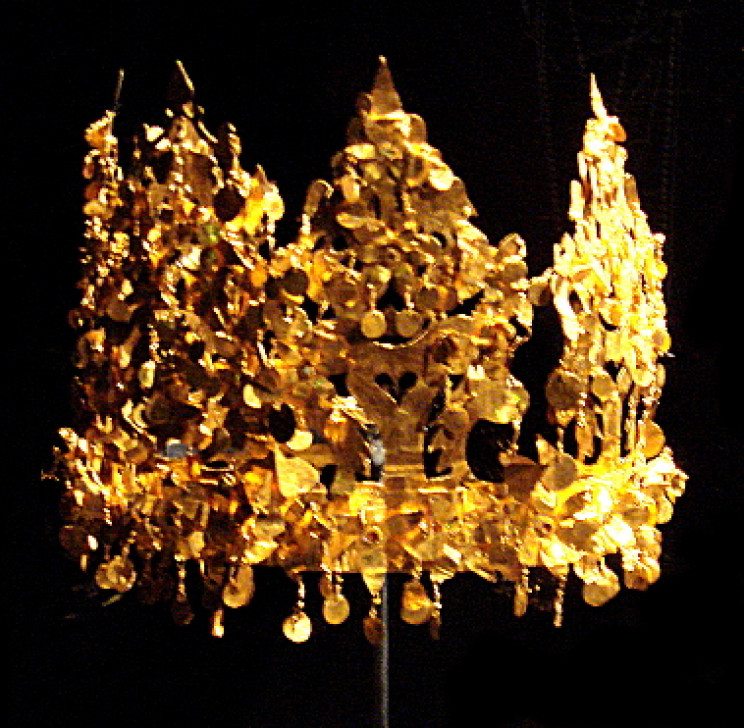
At the site, there were six burial mounds, one containing a man, and five containing women, who were possibly the man’s wives.
Out of the ground came 20,600 items, including coins, gold, silver, ivory, and precious stones. The items dated to between 100 B.C. and 100 A.D. and included necklaces, belts, medallions, and a crown.

During the wars in Afghanistan, the Bactrian Gold hoard was nowhere to be seen, but it resurfaced again in 2003. A new museum will be built in Kabul where the treasure will eventually be kept.
The holidays are coming up, and I don’t know about you, but this year, I’m asking for a metal detector.
Popular Coin News Topics
Today’s News
U.S. coin news, world coins and banknotes.
US Mint News
US Mint coins, upcoming releases, designs and announcements.
US Mint Sales
US Mint sales figures for coins, sets and other related coin collecting products.
US Coins
Mintages and coin specifications for modern US coins produced by the United States Mint.
Gold and Silver Prices
Gold, silver, platinum and palladium precious metals.
Currency Converter
International currency converter – Exchange rates for up to 164 currencies and three different precious metals to include gold, silver and platinum.
Coin Shows, Auctions & PR Events
Pretty obvious, it’s a link to shows and events around you!

